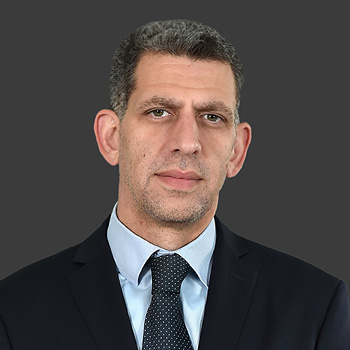
Morocco
What are some of the technical, political, financial or regulatory challenges to corporations adopting green energy in the short/medium term in your country and how have these challenges been overcome (or how can they be overcome)?
- Some of the implementing decrees of law No. 13-09 have not yet come into force, in particular the ministerial order identifying the map of areas for the development of solar projects. Therefore, no solar project can be authorized by the Ministry.
- The Moroccan national electricity grid has reached its capacity limits in certain regions.
- It is not possible today to sell electricity to the distributors connected to the medium-voltage grid.
These challenges are currently addressed in the draft reform of Law No. 13-09 (see Regulatory changes).

Morocco
Are there any anticipated regulatory changes which will alter the regulatory landscape for corporate green energy and corporate PPAs?
A new Draft Law No. 40-19 reforming law No. 13-09 aiming to improve the legislative and regulatory framework relating to the renewable energy sector in Morocco was published in December 2019 by the Moroccan General Secretariat of the Government. In this reform, the Moroccan legislator is addressing the current legal and technical difficulties faced by the operators, particularly:
Solar Zoning
Draft Law No. 40-19 removed this zoning requirement for solar energy projects. The zoning remains, however, applicable to wind energy projects.
National grid reception capacity and contribution to the stability of the grid
One of the main innovations introduced by Draft Law No. 40-19 is the introduction of the national grid carrying capacity (capacité d’acceuil) defined as the maximum quantity of installed capacity from renewable energy sources that the national grid can accommodate without facing management constraints. This carrying capacity will be fixed by the national electricity transport gird operator following the approval of the National Electricity Regulation Authority.
The publication of the grid reception capacity, following the entry into force of Draft Law No. 40-19, will give more visibility to the operators in order to submit or not the authorization pursuant to Law No. 13-09.
Selling electricity to distribution network operators
Draft Law No. 40-19 introduced the possibility for distribution network operators to acquire up to 40% of the total energy supplied from renewable energy sources.
In order to develop projects under the self-consumption regime, a draft bill was published on the website of the General Secretariat of the Government on 19 November 2020. This draft bill introduces a new self-consumption regime depending on whether or not the installation is connected to the grid.
This new regime allows for better visibility and greater transparency as to how the installations are operated and, where applicable, connected to the grid.

Morocco
What is the corporate appetite for green energy, including any political or financial incentives available to corporates to adopt green energy?
The Moroccan Government has set up its National Energy Strategy, which aims to reach 53% of electricity generation from renewable sources by 2030. This political incentive pushes the authorities to grant customs and tax incentives to corporates investment conventions.
There are, however, no specific financial incentives available to corporates that wish to adopt green energy.
What are the key local advantages of the corporate PPA model which can benefit our clients?
The price is freely agreed by the parties and is not determined by the law (no feed-in tariffs).
What subsidies are applicable to the generation and sale of renewable energy?
No subsidies are applicable.
Does your country implement a national support scheme with tradable green certificates (such as guarantees of origins)?
No.

Morocco
To the extent corporate PPAs are deployed, how are prices, terms and risks affected?
| Topic | Details |
| Do prices tend to be floating or fixed? | Fixed |
| What term is typically agreed for the PPAs? | 20 years |
| Are the PPAs take-or-pay or limited volume? | Both options are possible |
| Are there any other typical risks? | Not applicable |
To the extent corporate PPAs are deployed, in whose favour will the risks typically be balanced?
| Type of risk | Details |
| Volume risk | Generator |
| Change in law | Usually the change in law is qualified as force majeure event. |
| Increase / reduction of benefits | Generator |
| Market liberalisation (if applicable) | Not applicable |
| Credit risk | Generator |
| Imbalance power risk | Generator |
| Production profile risk | Generator |

Morocco
Does your country operate a balancing responsibility scheme?
Yes.
If your country operates a balancing responsibility scheme, who is the balancing authority and do the generator and offtaker typically undertake balancing themselves?
The national electricity transport grid operator is the balancing authority.
Draft Law No. 40-19 also requires the contribution by the generators to the stability of the grid by paying a tariff determined by the National Electricity Regulation Authority. In this regard, Draft Law No. 40-19 introduces the term "system services" consisting of a set of services enabling the national electricity transport grid operator to maintain frequency, voltage and cross-border trade with other countries. System services also allow the national electricity transport grid operator to manage the intermittent nature of renewable energy sources connected to the grid.

Morocco
What significant transactions/deals have taken place in the last 12-18 months?
Aftissat II wind farm project developed by Nareva Holding, through its subsidiary Energy Eolienne du Maroc, pursuant to Law No. 13-09. The wind farm will have a capacity of 200MW and will enter into service in 2022.
What transactions/deals are anticipated to come to market in the next 12-18 months?
A competitive bidding process was launched in December 2019 by the Ministry of Energy and Moroccan Agency for Sustainable Energy (MASEN) for the development of photovoltaic projects pursuant to law No. 13-09 relating to renewable energy and this for a total capacity of 400MW.

